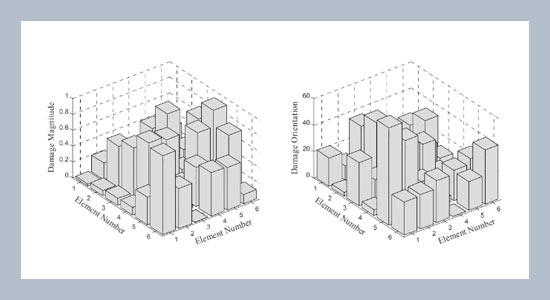S. Sandesha and K. Shankarb* a Research Scholar, Department of Mechanical Engineering, IIT Madras.
b (corresponding author) Assistant Professor, Department of Mechanical Engineering, IIT Madras, Chennai India 600036.
Download Citation:
|
Download PDF
Damage in a plate in the form of a line crack contained in an element, and oriented at an arbitrary angle is detected using an inverse time domain formulation. The time domain acceleration responses need to be measured at certain locations. The crack damage is modeled using an equivalent orthotropic finite element scheme based on the strain energy equivalence principle. The principle is to minimize the difference between the measured and theoretically predicted accelerations. Since the computational effort of identification using the global finite element model of the plate proved prohibitive, the substructure method was used. The substructure was further condensed of the rotary DOF’s for increased computational improvement. In order to identify the location and magnitude of the damage variables, acceleration responses at the substructure interfaces and also a few selected points inside the substructure are required. Using numerically simulated experiments the crack was reliably detected using this method. The damage is identified with the addition of noise as well as at different forcing frequencies. The Genetic Algorithm (GA) and Particle Swarm Optimization (PSO) were used to solve the inverse problem. The PSO algorithm proved superior to GA in convergence and accuracy.ABSTRACT
Keywords:
System Identification; Damage detection; Time domain; Substructure.
Share this article with your colleagues
REFERENCES
ARTICLE INFORMATION
Accepted:
2009-04-08
Available Online:
2009-10-01
Sandesh, S., Shankar, K. 2009. Damage identification of a thin plate in the time domain with substructuring-an application of inverse problem. International Journal of Applied Science and Engineering, 7, 79–93. https://doi.org/10.6703/IJASE.2009.7(1).79
Cite this article:






